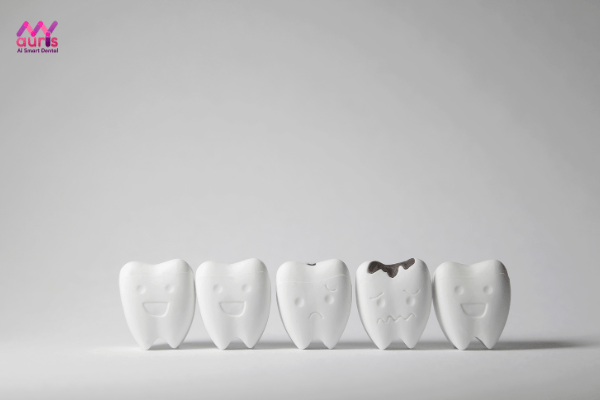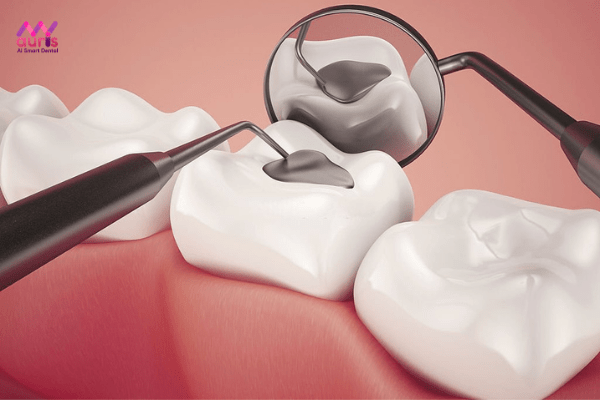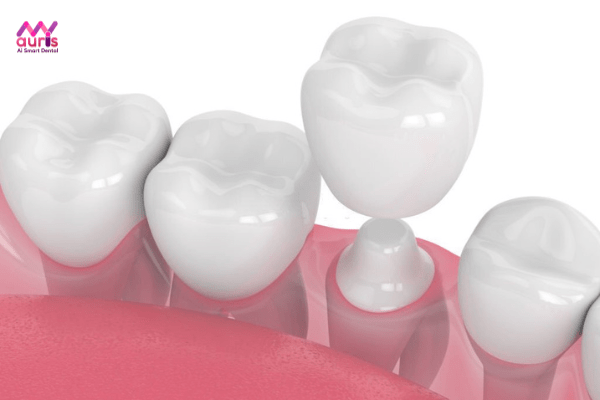Tooth decay is a common disease in all subjects. When the condition is in its early stages, there are many treatment options available and will not cause many dangerous complications. However, if not treated promptly, the more bacteria destroy tooth tissue, the larger the cavity becomes, and the infection becomes more difficult to treat. Therefore, people with large cavities often worry about whether they can be treated? To answer this problem, don’t skip this article.
Teeth with large cavities
Teeth with large cavities is considered a serious condition when having tooth decay. Holes in teeth due to decay are more common in molars than incisors. Initially, the teeth only appeared brown and black spots with small holes in the tooth surface. Without intervention at this time, bacteria will continue to attack and destroy the enamel layer, causing further tooth enamel erosion, deep damage, destroyed tooth tissue and larger holes.
Large cavities are a sign of severe progression of tooth decay. At this time, the enamel and dentin layers have been destroyed, and the cavity becomes larger. The patient will feel severe pain and sensitivity when eating and chewing, especially hot or cold food or food that falls into deep holes.

If treatment is still not intervened, bacteria will continue to attack deep inside, spreading to the tooth pulp, causing inflammation. Later, the decay spreads more and more, not only one large cavity but many holes and even spreads to other teeth, dangerous complications for health.
Complications of large cavities in teeth
If you do not intervene to treat tooth decay, the progression will get worse, causing many dangerous complications for oral health in particular and body health in general.
Big cavities affect the nerves
Blood vessels and nerves are located at the root of the tooth, so when tooth decay will spread to the pulp. At this time, the nerve will become seriously painful, this pain can last continuously for several days, you will even feel a headache.
Teeth with dead pulp
Severe tooth decay that spreads to the pulp can cause infection of the nerve at the root of the tooth and lead to painful swelling. This leads to loss of blood supply to the nerve and causes the tooth root to die. Some cases will have pain, some will not feel pain but have to face sudden tooth loss.
Causes infection in the oral cavity
Teeth broken into many pieces
When teeth have cavities and large cavities, there may also be a situation where teeth break into many pieces. Especially when there is force, chewing food on teeth with large cavities makes them unable to stand firmly on the jaw, causing them to crumble.

Can teeth with large cavities be filled?
The tooth filling method is often prescribed for cases of mild tooth decay, small cavity size, or incipient cavities that have not yet formed cavities.
As for large cavities, whether they can be filled or not depends on the condition of the tooth as well as the size. This can be known after the doctor examines and advises whether or not it should be filled. Most filling materials are not very durable, so when filling teeth with large holes, it is difficult to maintain them as long as desired.

To perform a filling, the doctor will clean the tooth, scrape away the decayed tooth tissue as well as remove bacteria from the cavity. Then, use dental filling material to fill the cavity and then harden the filling material.
Ceramic crowns for large cavities
Ceramic crowns for large cavities are often advised by doctors to patients. Because the method not only improves aesthetics but also lasts longer than dental fillings.
The doctor will treat tooth decay, remove bacteria and then place a porcelain crown on the real tooth base. Porcelain crowns have the same color and shape as real teeth while still ensuring chewing function. At the same time, a porcelain crown is placed on top to prevent the spread of bacteria that attack and cause tooth decay.

What if the tooth has large cavities and must be extracted?
In some cases, the above two methods cannot be applied because the infection and severe decay have the risk of spreading to other teeth, so the doctor is forced to remove the tooth. After tooth extraction, the patient loses confidence because of the gap in the jaw. To overcome that, the implant method – today’s modern dental technique will be a long-term solution.
There are many methods of growing dentures, but implants are highly appreciated for their aesthetics, safe materials, fast integration with the jaw bone, and prevention of bone loss due to tooth loss. At the same time, after implementation, the chewing function is still guaranteed, preventing bacterial attacks that lead to tooth decay.

Hope the information in the article helps people know more about teeth with large cavities. Thereby, everyone should pay attention to protecting their oral health, avoiding this situation from happening because it leads to many dangerous complications for the body. If you still have questions that need to be answered about oral health as well as cosmetic dental restoration, do not hesitate to contact My Auris dentistry for detailed advice. Wishing everyone to always have beautiful and healthy teeth.
Anh Thy





